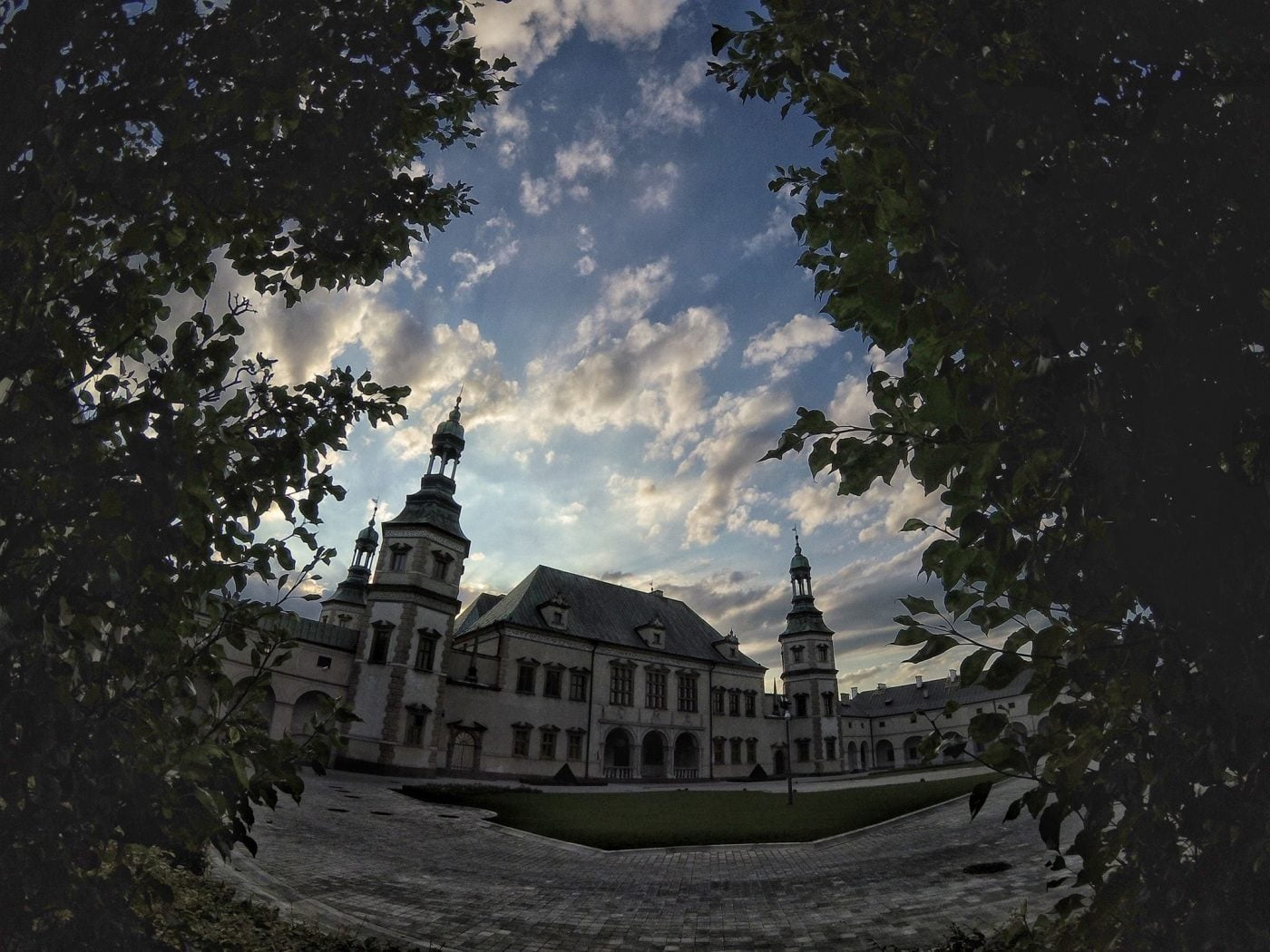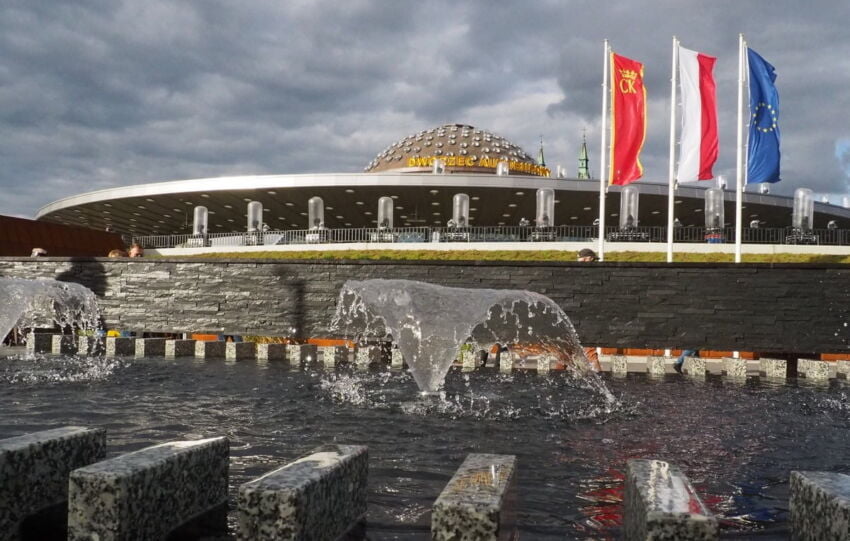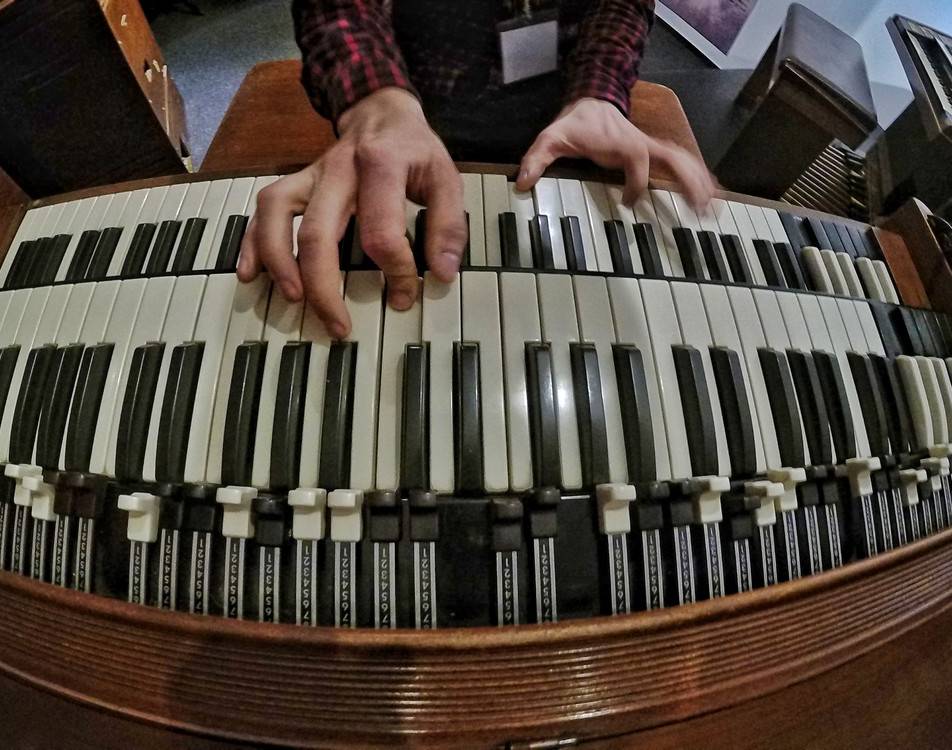Share This Article
The history of the Jewish community in Kielce is only 80 years old. Despite the fact that Jews stayed in Kielce both after this period and before it, officially the years 1862-1942 are considered a period when the Jewish community was of significant importance for the development of Kielce. I invite you to take a walk and know the story of Jews in Kielce.
Jews in Kielce – history
Despite the fact that Kielce did not have the “de non tolerandis Judaeis” privilege, the Jews did not settle in Kielce. All attempts ended with complaints from the inhabitants of Kielce. At the beginning of the 19th century, a part of the city was designated for Jewish settlement, but even then it was not easy due to the complaints and problems mentioned above. In 1862, as a result of an emancipation decree, that Jewish settlement became fully legal. Due to the January Uprising, the influx of people was slow and 10 years after that date, only 505 Jews lived in Kielce. History od Jews in Kielce its short but full of important periods.
People
The Jewish community of Kielce is not the numbers, but the people who influenced the history of our city. They are industrialists, politicians, booksellers, craftsmen and many other great inhabitants of Kielce. Herszel Zagajski – owner of Wietrznia, Juda Erlich – owner of Kadzielnia, Moric Goldhaar – owner of a bookstore and founder of Gazeta Kielecka, Abele Rapoport – the last rabbi of Kielce, Gustaw Herling-Grudziński – writer, Mojżesz Pelc – doctor in charge of the hospital in the Ghetto, these are just a handful of them . You will get to know places related to these characters, but not only that, during your walk.
Citywalk
Karski’s Bench
We start on the bridge over the Silnica River (Sienkiewicza Street). There is a statue of Jan Karski (actually Jan Romuald Kozielewski), who was the first to bring news about the Holocaust to the United States. Unfortunately, it was not taken seriously. He entered the Warsaw ghetto twice, and then to the death camp disguised as a Ukrainian guard to document what was happening there.
Planty 7
Apart from the area of the small and large ghetto, it is one of the darkest places in the history of Kielce Jews. It was the place where the Kielce Pogrom took place. On July 4, 1946, Poles with the support (and certainly no opposition) of the SB, army and police murdered 42 Jews. They died in the street and in their homes. The immediate cause of the attack was the rumor that the eight-year-old boy Henryk Błaszczyk was imprisoned by Jews. Finally, it turned out that the boy had invented the story to justify his absence from home. The Kielce Pogrom is considered one of the reasons for the mass emigration of Jews from Poland and other European countries to Israel.

Monument to the pogrom (White Wash II)
There is a monument at the intersection of Piotrkowska and Planty Streets. It blends in with its surroundings, and some have bad associations with its appearance. This monument, however, is dedicated to the victims of the pogrom and has its own symbolism. Looking at it from the top, we see the number 7, which is to remind us of the address of Planty 7 where the tragedy took place. The monument is called White Wash and the author’s intention was that it would get dirty with time and it would be an opportunity to nurture it, just like we should cherish Polish-Jewish relations.
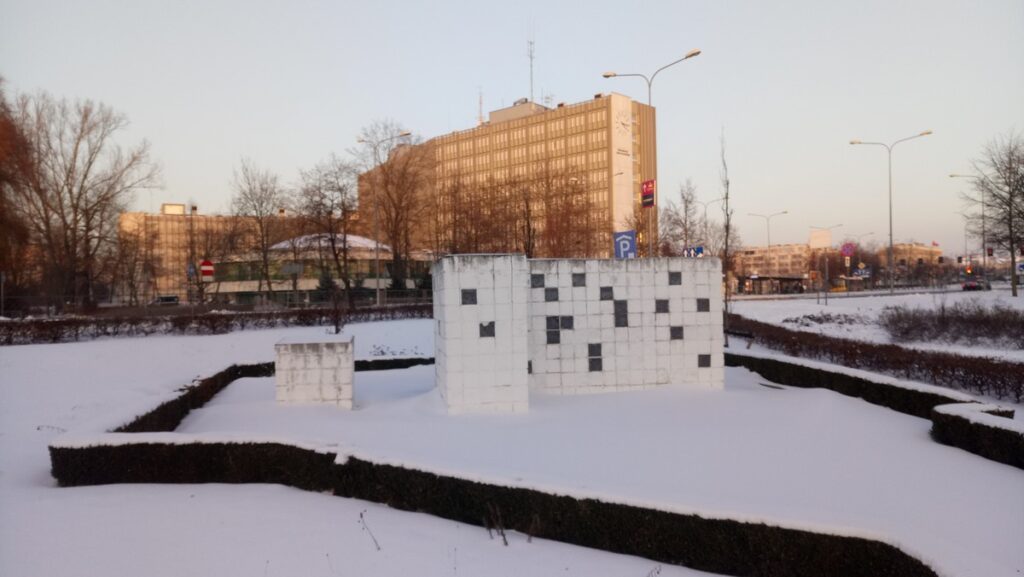
Silnica Valley – Skarpa
Another point of the walk is the Silnica Valley. We walk here in the area of the former large ghetto. Jewish people were murdered many times in the ghetto. Both Jews from Kielce and those brought from nearby towns (Chęciny, Bodzentyn, Chmielnik) and from Vienna lived there. In addition to German persecution, they were also exposed to problems with the lack of fuel and food. The ghetto was established in April 1941 and its liquidation was completed in August 1942.
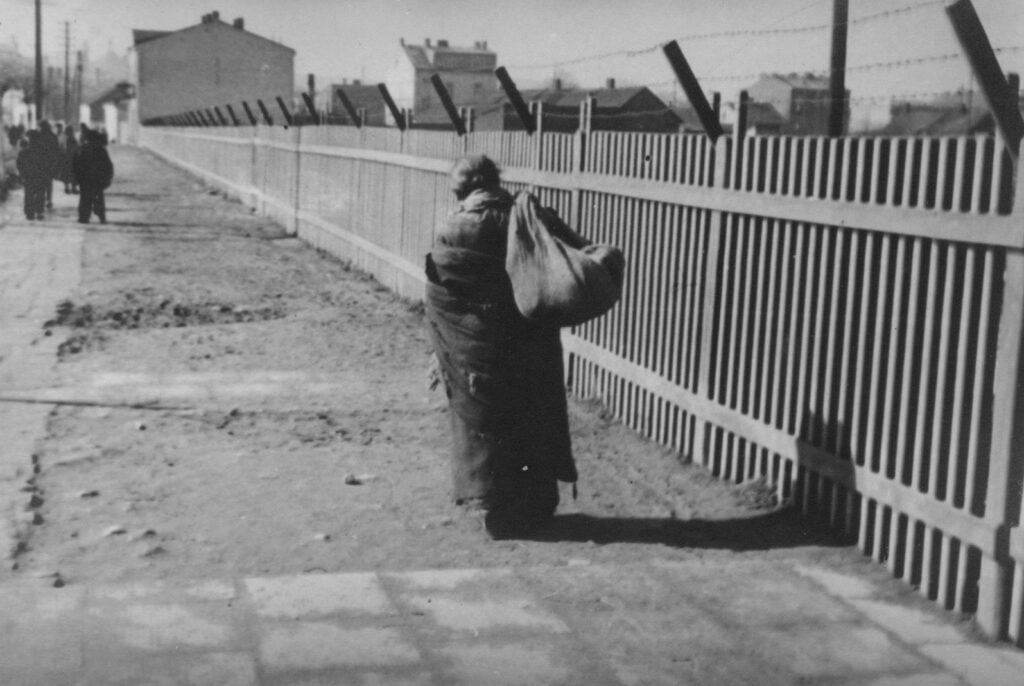
Menorah Monument
The monument of the buried menorah (Jewish candlestick) is dedicated to over 27,000 Jews from the Kielce ghetto who died here or in extermination camps. During the liquidation of the ghetto, the transports took Jews mainly to Treblinka. Part of the population was murdered on the spot, including the residents of an old people’s home and hospital. One of the more cruel acts was the murder of nearly 50 children between the ages of one and a half and thirteen. The author of the monument is Marek Cecuła – an artist from Kielce, coming from a Jewish family.
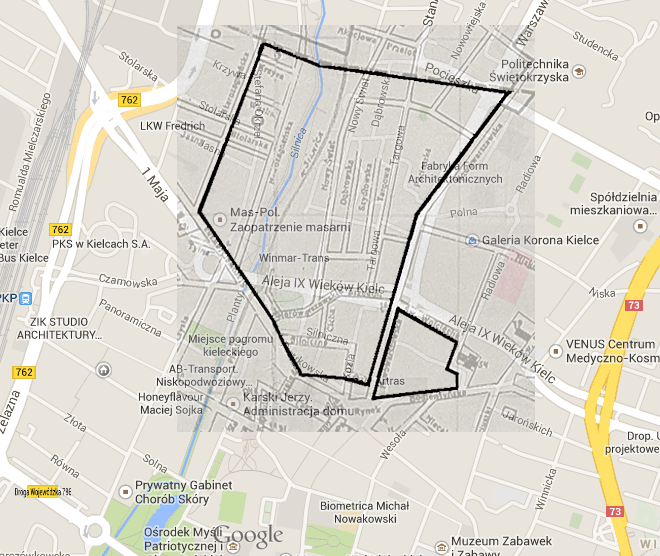
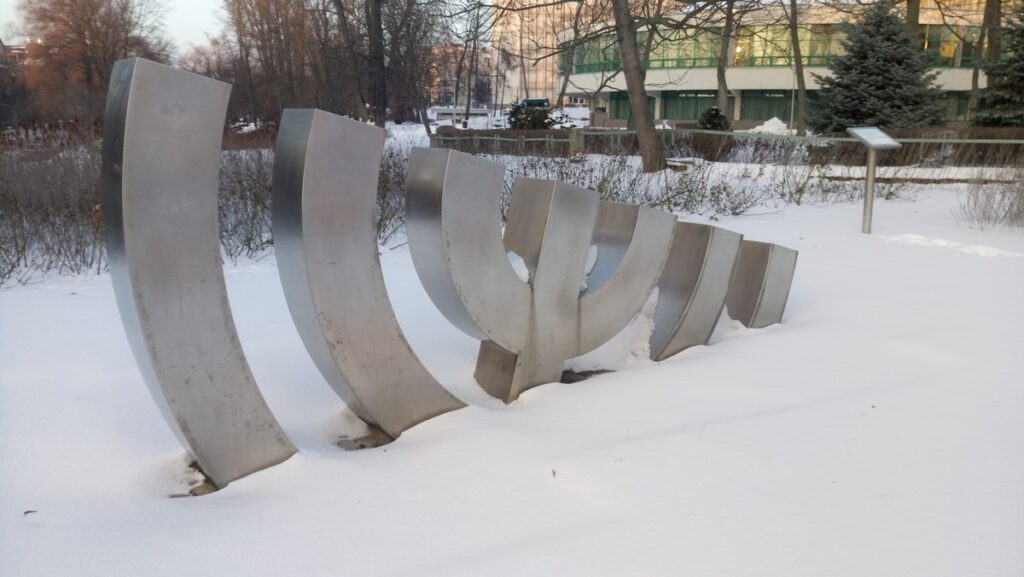
Synagogue
A walk in the footsteps of Kielce Jews cannot miss this place! The Kielce Synagogue was completed in 1909. Next to it, there was a rabbi’s house and a ritual bath – mikvah. It was built at the then Nowowarszawska Street. There was a place for 400 people there. There was also a school and a hundred-person men’s choir. During World War II, the Germans organized an arrest and a warehouse for stolen Jewish property in the synagogue building, and at the end of the occupation, the building was set on fire. In 1951 it was rebuilt for the needs of the State Archives, and in 1987 the synagogue was included in the register of immovable monuments.
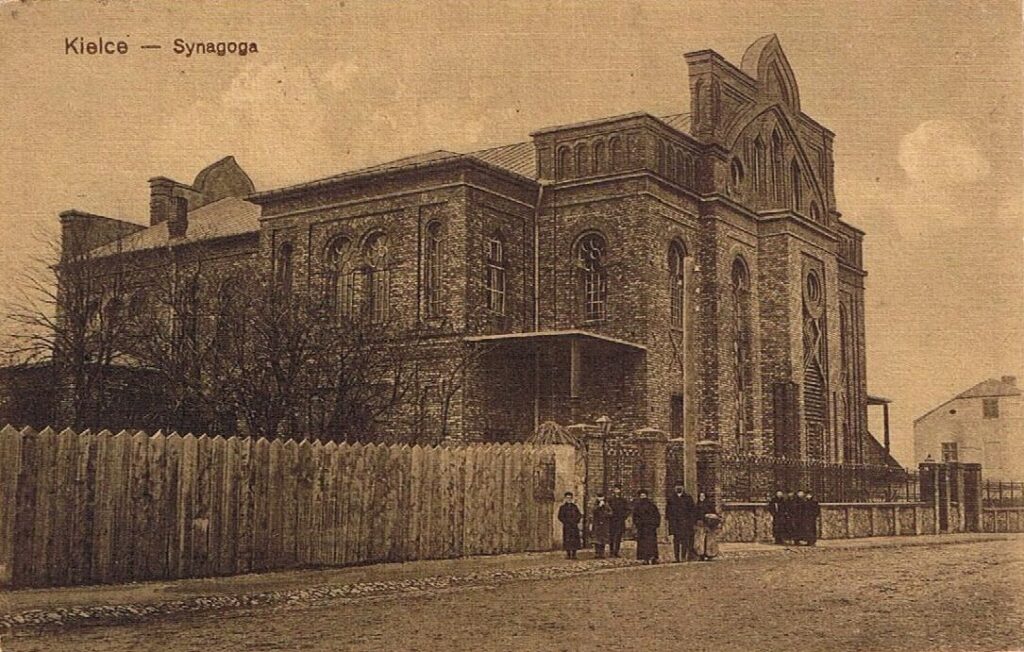
Right next to the synagogue, currently between the streets of Warszawska Street, until 2011 there was a building that housed a Jewish hospital run by Mojżesz Pelc during the war. It has been destroyed.
Plac Wolności
Plac Wolności served as the market square for many years. In the beginning, it was called the Bazaar Square. In 1873, the company of Chaskiel Landun from Chęciny built market halls, which currently houses the Museum of Toys and Play. The square was fully developed by 1918. Seven of the 28 properties located next to it belonged to Jews. In the interwar period, the square was leased from the city by Icek Tenenbaum. Right next to Plac Wolności there was a tenement house of Herszel Zagajski (owner of Wietrznia). Until recently, in the yard of the building there was still a private house of prayer, which was moved to the Jewish cemetery.
Rynek – Bodzentyńska
Before the Second World War, the Jewish community in Kielce accounted for almost 1/3 of the inhabitants of Kielce. Despite the fact that this subject is currently associated with tragic events (Ghetto, Pogrom), for many years the inhabitants of Kielce, regardless of their religion, lived side by side, cooperated, helped each other, sometimes argued and sometimes loved and this is what cannot be forgotten when discussing this topic.
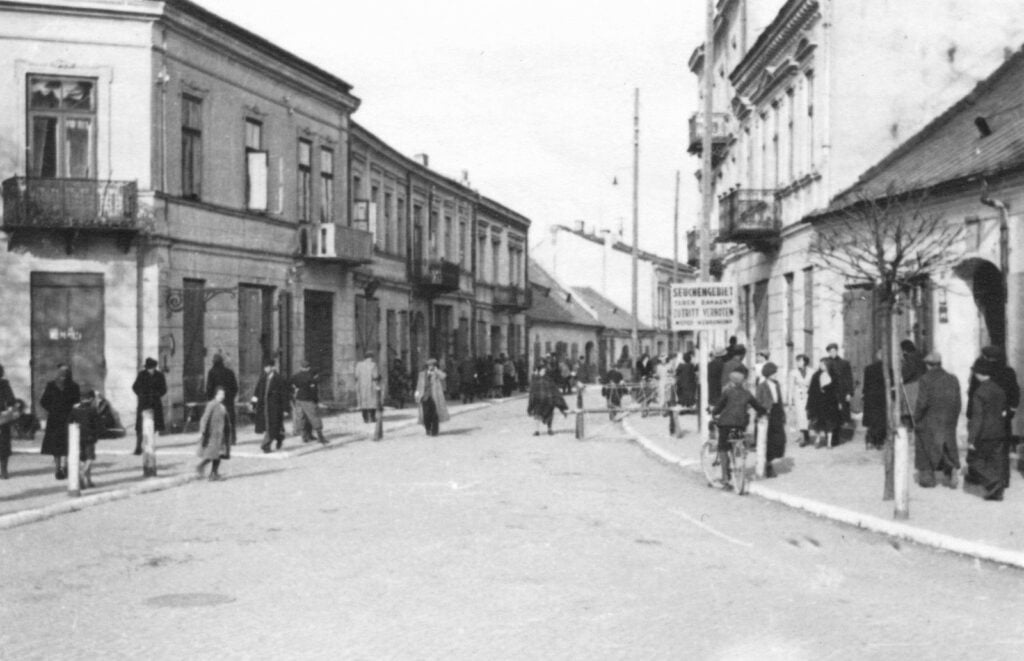
Silniczna
We end our walk in the footsteps of Kielce Jews at Silniczna Street. There is an interesting story associated with it. I had the opportunity to meet a person who lived on this street before World War II. She survived the ghetto and the camp in Oświęcim and left for Israel. She recently came back on a sentimental trip that was very inspiring for me.
Want more?
In addition to places that can be easily found in the field, there are also a few non-obvious places waiting for you on the map. By wandering through the marked points, you can find places that used to be rich in history!
The Fenomen cinema and its three seats are waiting for you, the house where Gustaw Herling-Grudziński lived, the printing house of Salomon Rzędowski, the villa of Henryk Bruner, and the Jewish hospital at ul. Kosciuszko.
A walk in the footsteps of Kielce Jews is just the beginning – there are still many secrets to be discovered!



